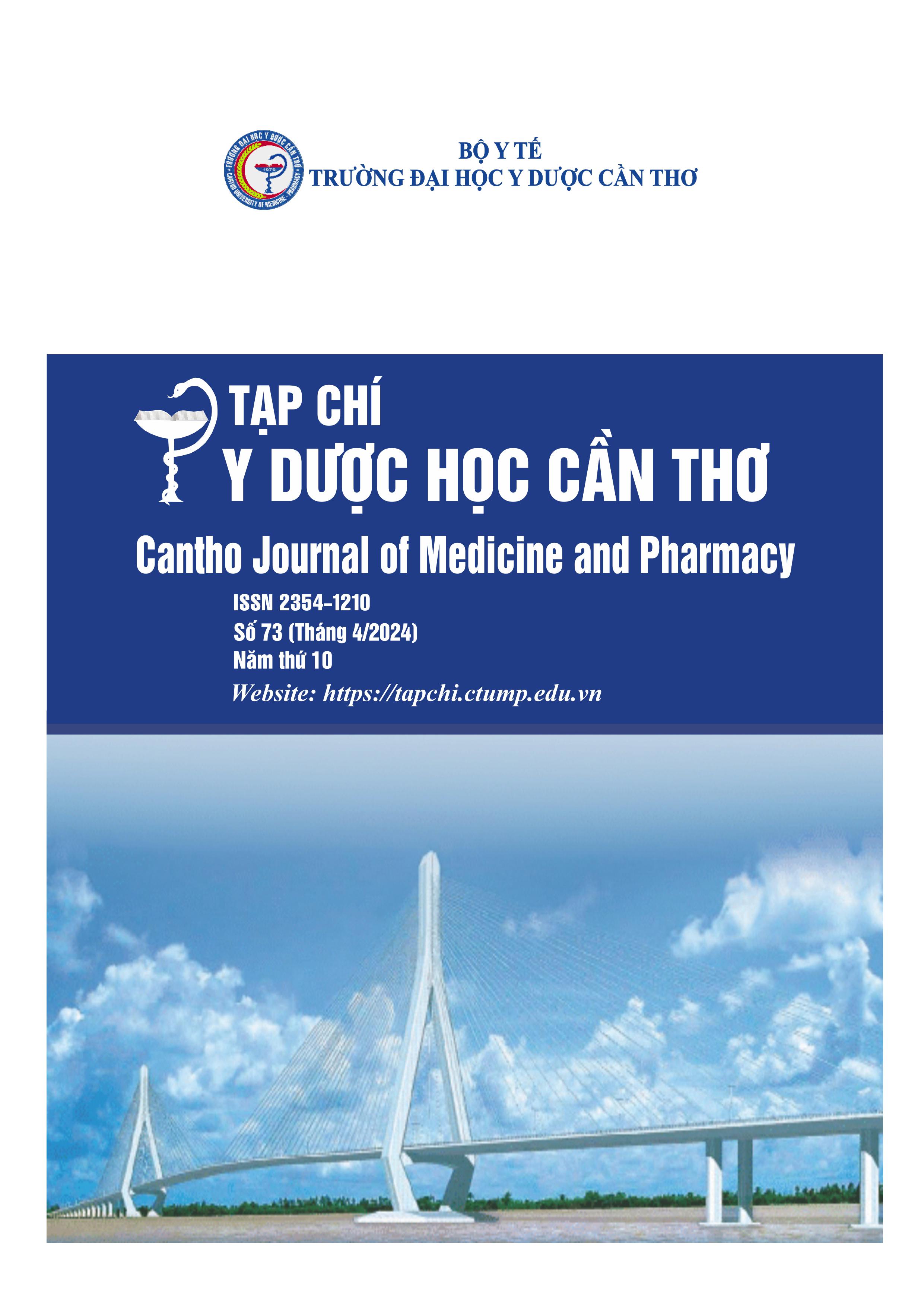CLINICAL FEATURES AND NERVE ELECTROPHYSIOLOGY IN CARBON TUBE SYNDROME AT SOC TRANG GENERAL HOSPITAL
Main Article Content
Abstract
Background: Early diagnosis and treatment of Carpal tunnel syndrome to prevent irreversible median nerve damage is essential. Objectives: To investigate the clinical and electrophysiological features of Carpal tunnel syndrome. Finding the relationship between clinical features and neuroelectrophysiology in Carpal tunnel syndrome. Materials and methods: Series of cases (34 cases), at the electromyography room of Soc Trang Province General Hospital. Results: The proportion of female patients is more than male (female: male ratio = 2.8:1), average age is 44.6 ± 9.96, the occupation of farmers is the largest (32.4%), 100% of patients had symptoms of numbness, 94.1% of pain, and 47.1% of muscle atrophy. The mean symptomatic Boston score of 3.08 ± 1.12 was higher than the mean functional Boston score (2.63 ± 1.56, p<0.001). Grading of neurological electrophysiology: the average group accounts for the highest rate of 29.4%. There is a relationship between the two groups with and without symptoms of numbness and tingling at all electrophysiological levels, with p = 0.002. There is a positive correlation between symptomatic and functional Boston grading and electrophysiological grading with r=0.407, r=0.368, p<0.05). Conclusion: Neurological electrophysiology plays a very important role in the diagnosis of Carpal tunnel syndrome, and help to assess the level of damage to the median nerve.
Article Details
Keywords
Carpal tunnel syndrome, neurological electrophysiology, Boston scale
References
2. American Association of Electrodiagnostic Medicine, American Academy of Neurology, and American Academy of Physical Medicine and Rehabilitation. Practice parameter for electrodiagnostic studies in carpal tunnel syndrome: summary statement. Muscle Nerve. 2002. 25(6), 918-22, doi: 10.1002/mus.10185. PMID: 12115985.
3. Levine D.W., Simmons B.P., Koris M.J, Daltroy L.H., Hohl G.G., et al. A self-administered questionnaire for the assessment of severity of symptoms and functional status in carpal tunnel syndrome. The Journal of bone and joint surgery American. 1993.75(11), 1585-92, doi:
10.2106/00004623-199311000-00002.
4. Padua L., LoMonaco M., Gregori B., Valente E.M., Padua R., et al. Neurophysiological classification and sensitivity in 500 carpal tunnel syndrome hands. Acta neurologica Scandinavica. 1997. 96(4), 211-7, doi: 10.1111/j.1600-0404.1997.tb00271.x.
5. Lê Thị Liễu. Nghiên cứu đặc điểm lâm sàng, điện cơ và siêu âm Doppler năng lượng trong hội chứng ống cổ tay. Luận án Tiến sĩ Trường Đại Học Y Hà Nội. 2018.
6. Phan Hồng Minh. Nghiên cứu đặc điểm lâm sàng, điện sinh lý thần kinh và điều trị hội chứng ống cổ tay vô căn ở người trưởng thành. Luận án tiến sĩ Trường Đại học Y Hà Nội. 2019.
7. Nguyễn Văn Ca, Vũ Anh Nhị, Nguyễn Lê Trung Hiếu. Đau thần kinh ở bệnh nhân mắc Hội chứng ống cổ tay. Y học Thành phố Hồ Chí Minh. 2021. 25[2], 13-9.
8. Sassi S.A., Giddins G. Gender differences in carpal tunnel relative cross-sectional area: a possible causative factor in idiopathic carpal tunnel syndrome. The Journal of hand surgery. 2016. 41(6), 638-42, doi: 10.1177/1753193415625404.
9. Nguyễn Ảnh Sang. Đánh giá cải thiện giấc ngủ sau phẫu thuật điều trị hội chứng ống cổ tay. Luận văn thạc sĩ y học, Đại học Y dược Thành phố Hồ Chí Minh. 2020.
10. Genova A., Dix O., Saefan A., Thakur M., Hassan A. Carpal Tunnel Syndrome: A Review of Literature. Cureus. 2020. 12(3), e7333, doi: 10.7759/cureus.7333.


